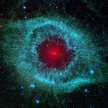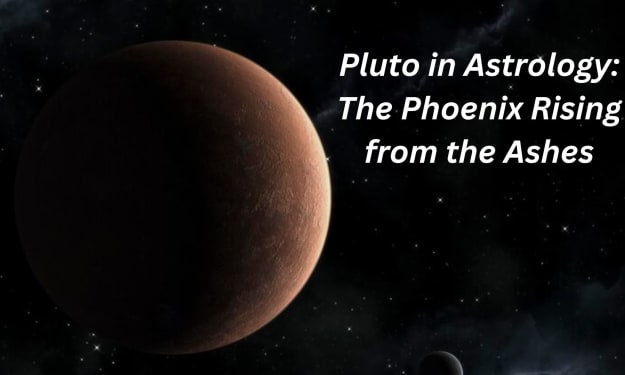Tales of Space and Life
I write easy-to-understand stories about the universe and life. Enjoy.

British spelling.
Here are two of them.
<><><>
1/2
The remarkable scale of atoms.
Atoms are the smallest particles of chemical elements.
Atoms are the basic building blocks of everything that can be seen or touched, including me, you, and every living thing on our planet.
Apart from a hydrogen atom, which consists of just one proton and one spinning electron, all other types of atoms are composed of different numbers of protons, neutrons, and electrons.
A chemical element is a pure substance made of atoms that have the same number of protons in their nucleus, and the number of protons is known as their atomic number.
The mass of an atom is the total number of protons and neutrons combined. To give you an idea of the size of an atom and how small they are, take a human being of 70 kilograms in weight. The total number of atoms making up that person's body is estimated to be 7 octillion, which is a staggering 7,000,000,000,000,000,000,000,000,000 atoms!
During our lives, vast amounts of atoms keep joining and leaving our bodies.

Image credit.rahmani KRESNA on Unsplash.
The three most common atoms by mass that make up 99% of the human body are oxygen, carbon, and hydrogen. When we die, all the elements we were made of will dissipate over time, eventually becoming part of other objects or even other living things in the future.
Under normal conditions, atoms cannot be destroyed; they just keep being recycled.
A molecule is an electrically neutral group of two or more atoms held together by chemical bonds; they can be simple or complex. To give an example, a water molecule comprises one oxygen atom and two hydrogen atoms bonded together. A carbon dioxide molecule comprises one carbon atom and two oxygen atoms bonded together.
Matter is the term used for material that takes up space. It is all around us; it is the air you breathe, the shoes you wear, the water in your glass, and everything you can touch and smell. It is what we are.
Anything that has mass is matter, and the three most commonly known states are solid, liquid, and gas. The difference in the structure of each state is described as the densities of the particles.
It took roughly 380,000 years after the birth of the universe for electrons to be trapped in orbits around nuclei, thus forming the first atoms. These new atoms formed the first low-mass elements, mainly hydrogen and helium. Hydrogen is still the most abundant element in the universe today.
As I said, a simple hydrogen atom contains just one proton at its centre and one spinning electron. Most of an atom is empty space.

Image credit. Steve Johnson on Unsplash.
To give an idea of how far the electron could be from the nucleus of a hydrogen atom, imagine this: scale up the atom so that the proton is the size of a golf ball. At that scale, and at certain times, the electron could be as far as 2 kilometres from the centre of the atom, giving the atom a diameter of roughly 4 kilometres.
An atom can be 0.1 to 0.5 nanometers in diameter. There are 1,000,000,000 nanometres in one metre.
Yes, atoms are unbelievably small.
<><><>
2/2
You will need to unleash your imagination.
These few paragraphs should give you a better understanding of how massive our galaxy, the Milky Way, really is.

Photo by Etienne Jong on Unsplash.
This is when your imagination needs to kick in.
It's difficult to comprehend the distances involved when we think of space journeys; even our local star, the Sun, is 149.6 million kilometres, or one astronomical unit, away from our planet Earth.
We all know that an aeroplane cannot fly in space. One of the many reasons for this is that it needs air to lift, but for the fun of it, imagine that it can.
A Boeing 737 airliner travelling at normal cruising speed would take over 20 years to cover the distance between the Earth and the Sun. That gives a different meaning to the saying 'a long-haul flight.'
Again, there are countless reasons why a flight like this would be impossible to achieve. All I am trying to do is give a perspective on the vast distances involved throughout the Milky Way, our home galaxy.
Now set the autopilot on a Boeing 737 airliner and send it on its way to Sagittarius A*, the black hole at the centre of our galaxy. That long, fictional flight from Earth would take over 35 billion years.
To us, our galaxy seems vast but is minuscule in comparison to the universe. If we use miles or kilometres as a measure of distance in space, it is only a short time before they have little meaning.
When you add too many zeros to a number, it becomes unimaginable.
Then we can use astronomical units as a measure of distance; One AU is the distance between the Earth and the Sun. For much longer distances, light minutes, hours, and light years can be used as a measure of distance.
Nothing else in the universe can reach the speed of light, which is almost 300,000 kilometres per second, or 1,080 million kilometres per hour.

Photo by Benjaminrobyn Jespersen on Unsplash.
Light leaving the Sun takes just over 8 minutes to reach the Earth, so we say the Earth is just over 8 light minutes from the Sun.
Proxima Centauri, a red dwarf star in the Alpha Centauri system, is the sun's closest star neighbour. It is about 4.2 light-years, or almost 40 trillion kilometres away. But that star is just a footstep away compared to most of the other stars in our galaxy.
Our galaxy is estimated to be over 100,000 light-years in diameter. So what does that mean?
For every minute of those 100,000 years, light will have travelled 18 million kilometres. Yes, it mounts up to a mind-boggling number of minutes and kilometres.
I could write down the numbers, but it would be meaningless to most of us.
The distances become unfathomable when we look beyond our local area in space.
The end.
<><><>
You may find my easy-to-understand stories about the universe and life interesting and educational.
Subscribe to me for free, and you will see my latest stories. Enjoy.
About the Creator
A B Forbes
Someone with a lifelong passion for that gargantuan area we call the universe. I also write stories about life itself. Enjoy






Comments
There are no comments for this story
Be the first to respond and start the conversation.